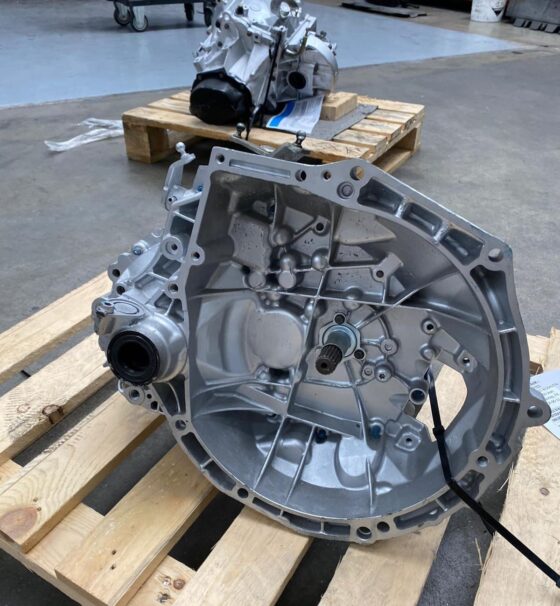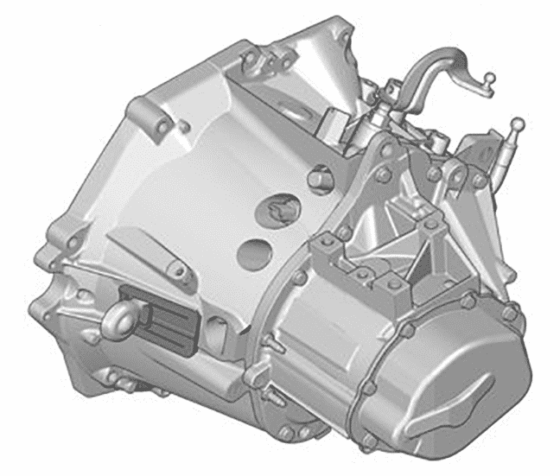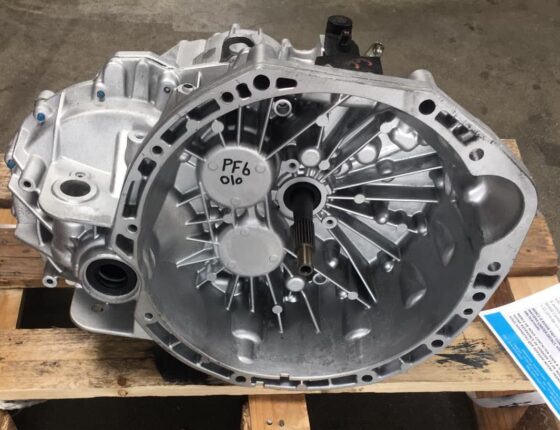The automaker Ford launched its range of pick-ups in 1948 under the name F-Series, and then rolled them out in multiple generations and variants. They were a complete success, with the American brand selling more than forty million unitsmaking them the world's best-selling range. The pick-up known as the F-150 was introduced to the North American market in 1975 with the sixth generation. sixth generation and quickly became the most popular most popular model of all..
Impeccable service
Gearbox broken? We help you identify and order your model
The exceptional longevity and success of this vehicle owes nothing to chance: the quality of its components is a major contributor to the Ford F-150's reputation. However, it can happen that a malfunction prematurely prematurely affect the gearbox's service life. What can you do to avoid a breakdown? What reflexes should you adopt when a breakdown occurs? Find out what our experts have to say in this article!

Learn about the technical specifications of the Ford F-150
To help you understand the maintenance recommendations for your Ford Ford F-150 gearbox, it is essential to know the vehicle's characteristics.
As the F-150 is a pick-up truck, it can be driven by either rear-wheel drive or all-wheel drivedepending on model and driver choice. In the first case, the power supplied by the engine is transmitted to the rear wheels in the latter case, all four wheels are driven. These are sometimes referred to as 4×4 vehicles, which require which require a transfer case to operate. This supplements the gearbox by distributing power appropriately between the F-150's front and rear wheels.
The gearbox can be either manual or manual or automatic. In the American market, the automatic version is the most widespread: in fact, it's the only option offered on the latest generations, along with the Ford 10R80, a ten-speed gearbox. Older models with mechanical gearboxes offer up to six gears. up to six gears.
The right daily gestures for a healthy gearbox
Maintenance of manual gearboxes
Since it is equipped with a clutch pedal, the manual gearbox is susceptible to deterioration caused by incorrect operation or careless gestures. Although it is designed to withstand them, such shocks can damage your transmission system over the long term.
In order to maximize their life expectancy, you can adopt a few simple habits:
- Keep your hand off the gearshift lever. The pressure exerted by this seemingly innocuous gesture is enough to bring the internal components of the transmission system into contact, accelerating wear;
- Don't keep first gear engaged when stopping at red lights or in traffic jams. Instead, shift into neutral: you'll spare the clutch pedal, and your foot at the same time;
- Avoid sudden downshifts. Skipping too many gears at once can damage the transmission system. Although you should avoid manipulating the transmission as much as possible, it is preferable to downshift in two stages, conditions permitting.
The special case of automatic gearboxes
As the automatic gearbox has no clutch system, the chances of unintentionally damaging it while driving are virtually non-existent. virtually non-existent. However, never attempt to engage an alternative gear (park, noted (P) or reverse, noted (R)) when your Ford F-150 has not come to a complete stop. This could cause serious damage to the transmission system.
On the other hand, unlike manual gearboxes, automatic versions require more frequent maintenance, in the form of transmission oil changes.
Changing the transmission oil: an essential maintenance operation
Too often confused with motor oil, which has entirely different properties, transmission oil (or gearbox oil) is an essential component in the smooth running of your car. In addition to its a detergent function function, helping to clean the various components of the transmission system, it also lubricates them and helps dissipate the heat accumulated during driving.
The transmission oil circulating in an automatic gearbox deteriorates rapidly, requiring an oil change. Neglecting this maintenance operation can lead to gearbox damage and potentially and potentially costly repairs. To avoid this, remember to change the oil every two years (or have a garage do it for you) or after 60,000 kilometers.
Note that mechanical gearboxes generally don't need to be changed until they've reached the 250,000 km mark. Nonetheless, if you notice any resistance when shifting gears, or the the appearance of abnormal noises (such as grinding noises), you can also have your oil changed. And to make sure you're driving with peace of mind, have it done every five years !

What to do in the event of advanced deterioration?
The first thing to do in the event of gearbox failure is to consult a professional mechanic. By describing any unusual symptoms you observed before the breakdown, you'll help him or her to diagnose the problem and carry out the appropriate repairs.
While most malfunctions can be resolved by changing the gearbox oil or a wearing part, some faults are too complex to be dealt with in the garage. In this case, your mechanic will recommend that you proceed to complete gearbox replacement.
Try our reconditioned gearboxes in standard exchange ! This is the most effective way to get back behind the wheel quickly: you get a fully reconditioned gearbox, tested by our experts, at an affordable price. close to pre-owned. We collect your old box free of charge on delivery of the new one, which is one-year warranty ! Enter your registration number on our contact form and let us guide you: it's easy, fast and without obligation !








